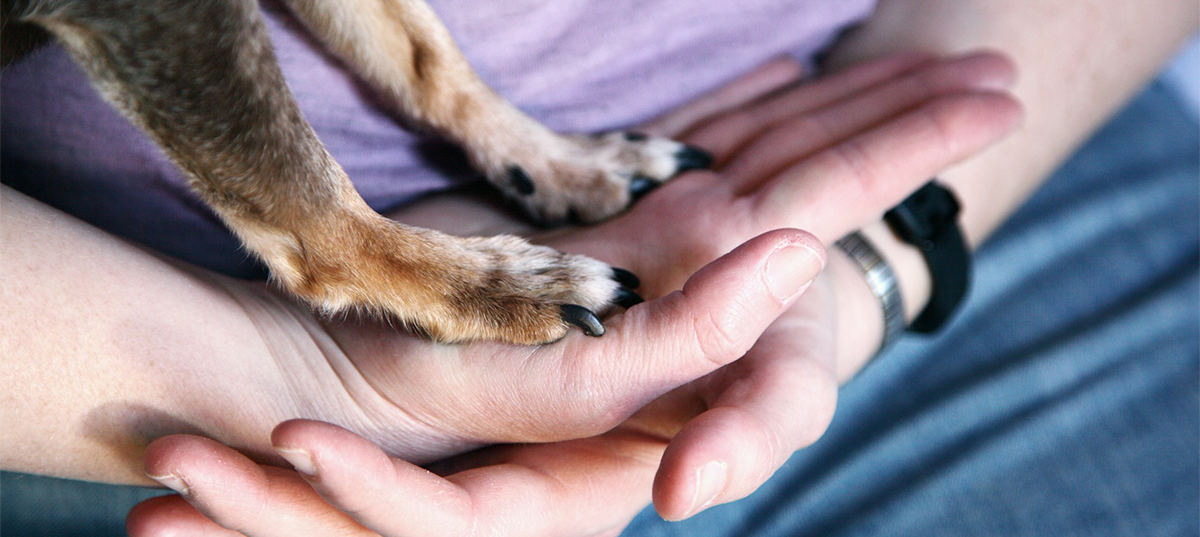5 Reasons to Clip Your Dog’s Nails & How to Do It

March 2023
As a devoted dog owner, you’re likely familiar with the basics of pet care: feeding, bathing, and regular visits to the vet. However, one aspect of canine grooming that often gets overlooked is nail trimming. While it might seem like a minor detail, maintaining your dog’s nail length is important to their health and well-being.
Why Clipping Your Dog’s Nails is Essential
- Prevents Pain and Discomfort: Long nails can cause discomfort or even pain for your dog. When nails are too long, they can press against the ground and force the toe joints to twist unnaturally, leading to joint pain and potentially contributing to arthritis over time.
- Avoids Injuries: Overgrown nails can split, break, or even grow into the paw pads, leading to infections and severe pain. Regular trimming helps prevent these painful situations.
- Promotes Proper Posture: Dogs with long nails tend to alter their stance, leaning more on the back of their feet. This unnatural posture can lead to skeletal changes and joint issues.
- Enhances Mobility: Proper nail length is crucial for your dog’s mobility. Long nails can hinder their ability to walk, run, and play, affecting their overall quality of life.
- Prevents Damage: Long nails can cause damage to floors, furniture, and even your skin when your dog jumps up to greet you.
How to Clip Your Dog’s Nails:
Step 1: Gather Your Supplies
- A pair of sharp, dog-specific nail clippers or a nail grinder
- Styptic powder or cornstarch (to stop bleeding if you cut the quick)
- Treats to reward your dog
- A file to smooth any rough edges (optional)
Step 2: Prepare Your Dog
- Choose a quiet, well-lit area where your dog feels comfortable.
- Help your dog get accustomed to having their paws handled by gently massaging their legs and feet regularly.
- Introduce the clippers or grinder in a non-threatening way, allowing your dog to sniff and inspect them.
Step 3: Identify the Quick
- The quick is the blood vessel and nerve inside the nail. In clear nails, it appears as a pinkish area. Avoid cutting into the quick, as it will cause pain and bleeding.
- For dogs with dark nails, the quick is harder to see, so trim small amounts at a time.
Step 4: Start Trimming
- Hold your dog’s paw firmly but gently.
- Clip small bits of the nail at a time, especially if you’re new to this or if your dog’s nails are dark.
- If using a grinder, gently grind the nail down, being careful not to get too close to the quick.
Step 5: Avoid the Quick
- If you accidentally cut the quick, apply styptic powder or cornstarch to the nail to stop the bleeding.
- Comfort your dog if they seem distressed and give them a treat to associate the experience with positive reinforcement.
Step 6: Smooth the Edges
- After clipping, you can use a file to smooth any sharp or rough edges.
Step 7: Reward Your Dog
- Always end the session with plenty of praise and some treats. This positive reinforcement helps your dog associate nail trimming with a positive experience.
More tips:
- Regularity is Key: Regular trimming makes the quick recede, making it easier to maintain an appropriate nail length. Aim to trim your dog’s nails every 3-6 weeks, depending on their growth rate.
- Stay Calm: Your dog can sense your emotions, so if you’re anxious, they will be too. Stay calm and composed throughout the process.
- Know When to Stop: If your dog is extremely stressed or aggressive, it might be best to stop and try another time or seek professional help.
- Professional Assistance: If you’re uncomfortable with doing it yourself, consider having a professional groomer or veterinarian handle the nail trimming.
One of the many reasons people choose Erie Station Village is because we’re pet-friendly. We think pets bring companionship and joy to our lives, and living in an apartment or townhome shouldn’t prevent you from having a pet. If you’re thinking of getting one, feel free to reach out to the leasing office to learn more about our pet-friendly policy.
